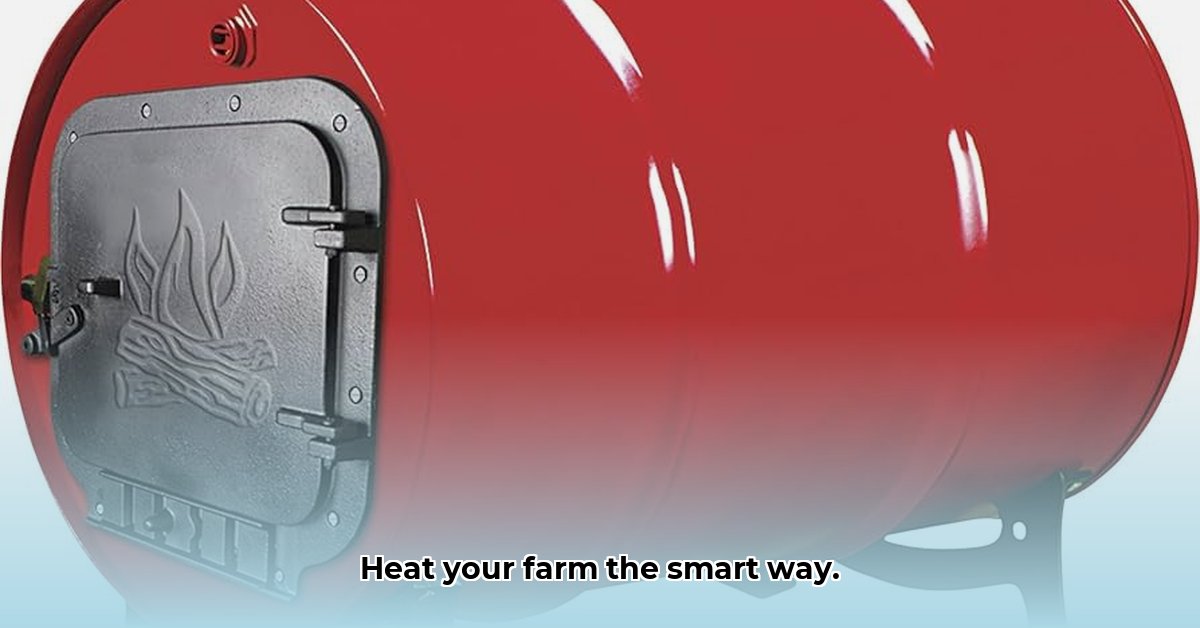
Choosing the Right Kit for Your Needs
Selecting the appropriate barrel stove kit from Tractor Supply is crucial for efficient and safe heating. Consider the size of the area you need to heat—a small greenhouse requires less heating power than a large workshop. Carefully review the specifications of various models available at Tractor Supply 1, paying close attention to heating capacity (BTUs), dimensions, and materials. Reading customer reviews can provide valuable insights into real-world performance and durability. Factor in your budget and the ongoing cost of fuel; seasoned hardwood is generally recommended, but the cost of fuel should be considered when selecting a model. Remember, a larger stove isn't always better; an oversized stove can be inefficient and lead to wasted fuel. For more information, check out this helpful resource: Tractor Supply Kits.
Assembling Your Tractor Supply Barrel Stove Kit: A Step-by-Step Guide
Assembling your barrel stove is straightforward but requires careful attention to detail and safety. Always wear work gloves and safety glasses.
Inventory: Before beginning assembly, carefully inspect all parts against the included diagram to ensure no components are missing or damaged. If there are any issues, contact Tractor Supply immediately.
Base Assembly: Assemble the stove base according to the manufacturer’s instructions, ensuring that all bolts are securely tightened. A stable base is critical for safe operation.
Barrel Placement: Carefully lift the barrel onto the base, ensuring it sits firmly and evenly. A wobbly barrel is a safety hazard.
Door Installation: Attach the stove door and hinges, ensuring a tight seal to prevent drafts and maximize efficiency.
Chimney Installation: Correct chimney installation is paramount for safe exhaust. Follow the manufacturer's instructions precisely, ensuring a secure and leak-proof connection.
Pre-Fire Inspection: Before lighting any fire, thoroughly inspect the assembled stove, checking for loose parts, wobbly components, and ensuring all connections are secure.
Safe and Efficient Operation: Prioritizing Safety
Safe and efficient operation of your barrel stove is non-negotiable. Prioritize safety at all times.
Ventilation: Adequate ventilation is crucial to prevent the buildup of dangerous carbon monoxide gas. Invest in a reliable carbon monoxide detector and ensure proper ventilation in the heated area.
Fuel Selection: Use only seasoned hardwood. Softwoods produce excessive creosote, a flammable substance that can build up in your chimney and significantly increase the risk of chimney fires.
Airflow Control: Mastering airflow is critical. Too much air wastes fuel, while insufficient airflow results in smoky combustion and reduced heat output. Experiment to find the optimal airflow for efficient burning.
Chimney Maintenance: Regular chimney inspections and cleaning are essential to prevent creosote buildup and avoid the risk of chimney fires. Consider a professional chimney sweep for regular cleaning.
Firebox Management: Avoid overloading the firebox. A slow, steady burn is more efficient and safer than intense, rapid combustion.
Fuel Selection and Storage: Sustainable Practices
Sustainability should be a priority. Choose sustainably harvested hardwood to minimize your environmental impact. Consider purchasing firewood from local suppliers who practice responsible forestry. Proper storage of firewood is also key. Keep your firewood dry and sheltered from rain and snow, as wet wood burns poorly, produces less heat, and leads to increased creosote buildup and less efficient burning. Proper storage ensures efficient combustion and reduces impact on the environment.
Maintenance and Troubleshooting: Extending Your Stove's Lifespan
Regular maintenance will significantly extend the life of your barrel stove and ensure optimum performance.
| Task | Frequency | Details |
|---|---|---|
| Ash Removal | After each use | Regularly remove ashes to maintain proper airflow and prevent buildup. |
| Chimney Inspection | Monthly | Check for creosote buildup and address any concerns. Professional cleaning may be necessary. |
| Door Seal Check | Periodically | Ensure a tight seal to prevent drafts and maintain efficient heating. |
| Rust and Damage Check | Annually | Inspect the stove for rust or damage and address any issues promptly. |
Common problems include poor airflow (check vents and ash buildup), insufficient fuel (use seasoned hardwood only), and chimney issues (creosote buildup or obstructions).
Integrating Your Stove into a Sustainable Farm System
Consider integrating your barrel stove into your overall farm system for enhanced sustainability and energy efficiency. Explore possibilities such as:
- Water Heating: Use the stove's heat to pre-heat water for livestock or cleaning.
- Greenhouse Heating: Extend your growing season by using the stove to provide heat for a greenhouse.
- Workshop Heating: Maintain a comfortable and safe working environment in your workshop during colder months.
By creatively integrating your barrel stove, you'll boost energy efficiency leading to lower heating costs and reduced environmental impact.
Conclusion: Sustainable Heating for Your Farm
A Tractor Supply barrel stove kit offers an affordable and effective heating solution for various farm applications. By combining the right kit selection, safe operation, sustainable practices, and regular maintenance, you can ensure years of reliable service while minimizing environmental impact and reducing heating costs..